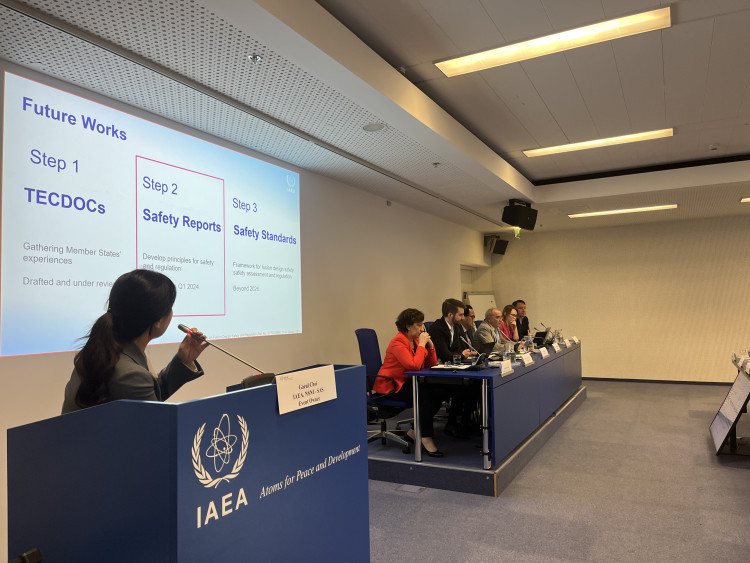More than 100 representatives from 23 countries and three international organisations shared their experiences on the safety and regulation of fusion facilities during a technical meeting on fusion design safety and regulation at the IAEA's headquarters in Vienna from 23 to 25 October 2023.
"Following on from recent scientific breakthroughs in fusion science, both public and private sector ventures are now looking to move away from experimental fusion devices and towards prototype and commercial fusion power plants," said Kirsi Alm‑Lytz, Head of the IAEA Regulatory Activities Section, in her opening remarks at the meeting. "As the scale and nature of fusion facilities evolve, our regulations and safety approaches must evolve with them," she said.
Participants delivered presentations on general safety approaches; safety cases for demonstration fusion power plants; and technology inclusive safety assessment methodologies as well as fusion specific hazards such as tritium and decay heat.
Participants from national regulatory bodies provided information on the latest decisions on national regulatory frameworks for fusion, while those from the private sector provided their perspectives on what a proportionate regulation of fusion might look like in the coming years. This was an important aspect of the meeting because regulatory frameworks suitable for nuclear power plants may not be suitable to regulate fusion facilities.
The meeting covered the challenges associated with design safety, safety assessment and regulation of fusion power plants and early-stage fusion facilities; the outcomes from these discussions will be addressed in the development of IAEA safety reports on fusion safety and regulation, as well as in the development of fusion-specific safety standards.
As noted by Francisco Castejon, a Commissioner from the Spanish Nuclear Council, "It has been excellent to participate in this technical meeting. The discussions have been really fruitful, and we can say that we have envisaged how to establish the route towards a harmonized fusion regulation. We have also had the opportunity of discussing the different strategies around the world to achieving commercial fusion."

IAEA Scientific Secretary presented the IAEA's plan on the development of fusion-specific safety standards. (Photo: G. Choi/IAEA)
Emphasising the central role of the IAEA in this advanced technology, Sally Forbes, Fusion Safety Advisor of the United Kingdom Atomic Energy Authority, added that "the IAEA is central in being able to capture and consolidate this knowledge into fusion standards, with the aim of achieving a degree of standardization in design safety internationally. Alongside this, seeking high level harmonization of regulatory frameworks for fusion via IAEA standards, will aid development and deployment of fusion energy systems globally in the future."
This view was further echoed by Olivier Chenais, Head of the Nuclear Safety Division of the ITER Organisation, who said: "thanks to this technical meeting we are now one step closer in the development of the widely anticipated fusion safety standard."
The IAEA Division of Nuclear Installation Safety is developing two TECDOCs on fusion safety and regulation and will soon begin work on the development of a Safety Report that will set out expectations for the safety and regulation of fusion. The IAEA aims to start developing fusion-specific safety standards later this decade, commensurate with the pace of the development of the technology. These safety standards will represent the consensus opinion of IAEA's Member States as to what is an appropriate set of requirements, and later guidance, for the safety and regulation of fusion facilities. "This technical meeting has been really timely. The meeting marks the beginning of our next chapter on fusion design safety, safety assessment and regulation," said Ana Gomez Cobo, Head of the IAEA Safety Assessment Section in her closing remarks at the meeting.
What is fusion?
Nuclear energy can also be produced by fusion reactions of light nuclei. This technique promises many advantages and has attracted global research and development efforts. The IAEA has supported fusion energy research since its inception and helps countries exchange and build knowledge on fusion science and technology.






